Vancouver Seawall History
Vancouver’s Seawall has been a work in progress since 1917, and over the last 100 years it has grown from a retaining wall into a 28km seaside path for runners, walkers, strollers, and cyclists. The Vancouver Seawall stretches from Coal Harbour, around Stanley Park, through to Sunset Beach, False Creek, over to Granville Island, under the Burrard Bridge, to Vanier Park and through Kitsilano to Spanish Banks. Today, it’s actually the world’s longest uninterrupted waterfront path!
While on a walk on the popular route with my father a few weeks ago he commented about how he never did the full Seawall loop around Stanley Park as a kid growing up in Vancouver – he couldn’t have. It wasn’t until 1980 that the paved circumference path around the park was completed.

1930, James Crookall, Archives# CVA 260-312.
TIMELINE 1917: Park Board master stone mason Jimmy (James) Cunnningham began building the Stanley Park Seawall. Much of its incremental progress was overseen by Cunningham from the late 1920s until his retirement 35 years later.
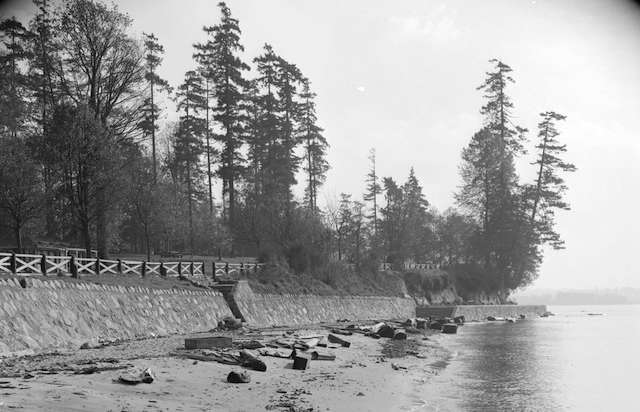
1940s: The extent of the Sea Wall at the time. Photo by Jack Lindsay. Archives# CVA 1184-2402.
Jimmy (James) Cunningham was born in 1878 on the Isle of Bute in Scotland. He came to Canada from Scotland in 1910, then served in WWI with Canadian Expeditionary Force. He worked extensively as a stonemason, including UBC, Vancouver homes, pools at Lumberman’s Arch, Second and Kits beaches, Empress and Banff Springs hotels. In 1917, he began building the Stanley Park seawall. In 1931, he was named master stonemason for Vancouver Parks Board to secure Stanley Park’s shores. Cunningham began the route at Brockton, supervising the building of the lighthouse and seawall around the point. He retired in 1955 but supervised the wall until his death, completing three miles. [Source]
TIMELINE 1968: The Stanley Park Seawall had had 1,200 lineal feet added
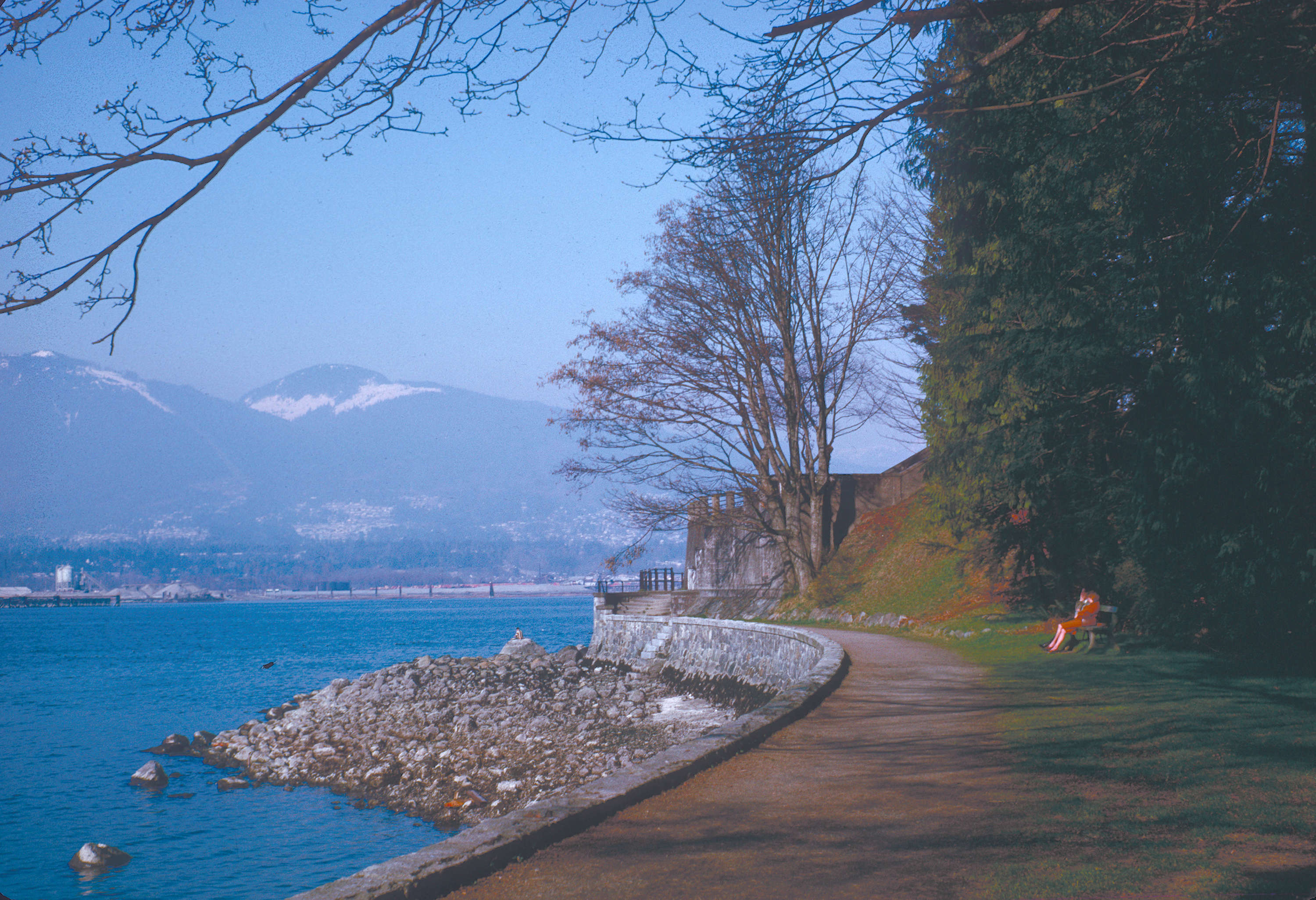
1966: Archives# CVA 1502-1000.
TIMELINE 1980: The remaining 1.5 miles in the Siwash Rock area were completed
TIMELINE September 26, 1971 from the Vancouver Sun via Vancouver History: “The last stone was laid in the Stanley Park Seawall. Midway between Prospect Point and Siwash Rock a small group of dignitaries—watched by about 150 spectators—gathered with trowels and dollops of cement to tap the wall’s last block into place. The group included H.H. Stevens, 92, who as Conservative MP for Vancouver riding at the time had been one of the seawall’s original promoters. In 1920 Stevens would arrange for 2,300 unemployed men to work on the wall.
One person who, regrettably, wasn’t present at the ceremony—he had died in 1963—was a man who had spent more than 30 years working on the wall. His name was Jimmy Cunningham, a master stonemason, and so dedicated to the work that he once left his sickbed and went down to the wall in his pyjamas to see how his crew was doing. His ashes are tucked away within the wall in an unmarked location. Jimmy and his crew gave us something wonderful.”
TIMELINE September 21, 1980: The entire Seawall loop around Stanley Park was declared officially completed with the final paving between Third Beach and Second Beach. A plaque at Siwash Rock was erected in memory of Cunningham.
I love this quote from the Vancouver Sun on the day of the Seawall’s completion: “The wall was conceived to prevent erosion of the park’s foreshore, but would accomplish something else just as important: the most magnificent 9-kilometre 28-kilometre walk in Canada.”
For more Stanley Park Seawall history and information, check out my two part series for Tourism Vancouver: Waterfronts 1 and Waterfronts 2.

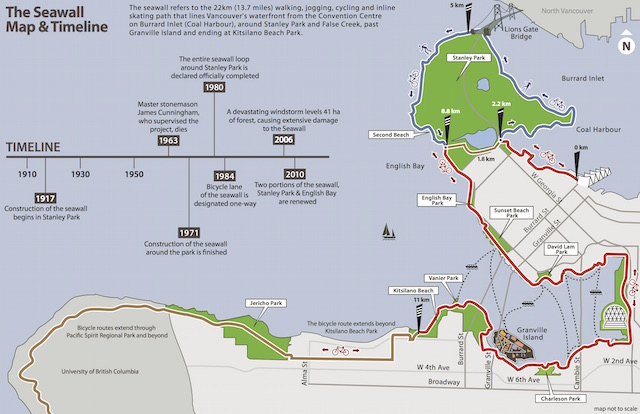

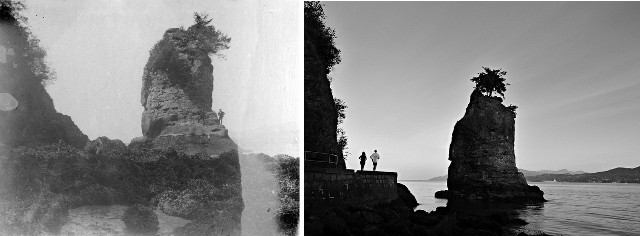
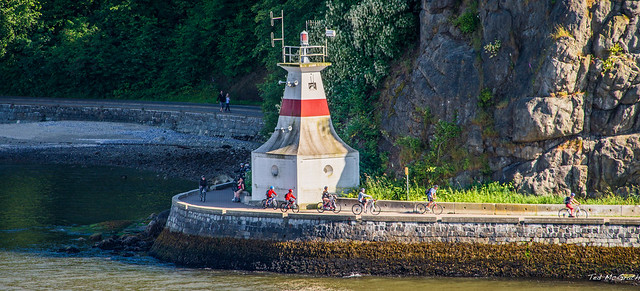
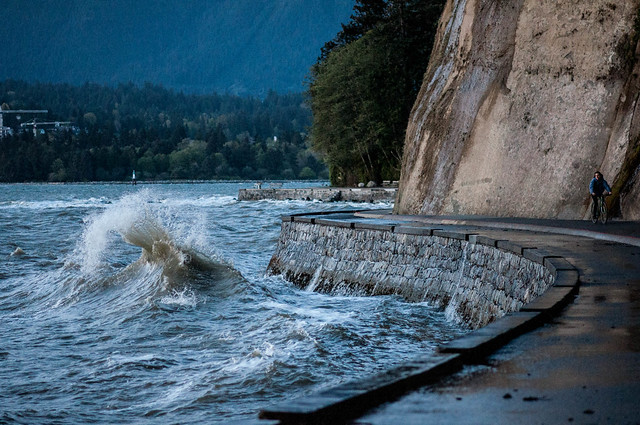
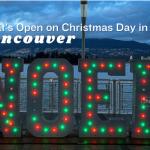


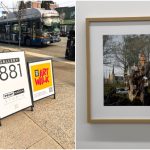

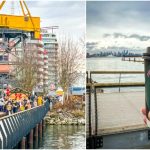
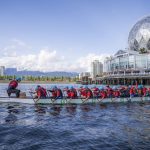



2 Comments — Comments Are Closed
The ashes of James Cunningham and his wife are located behind a stone plaque at Siwash Rock.
What a great history of the seawall. TYVM
Such a precious heritage asset — enjoy!
btw
shd be: [ wall.) ]